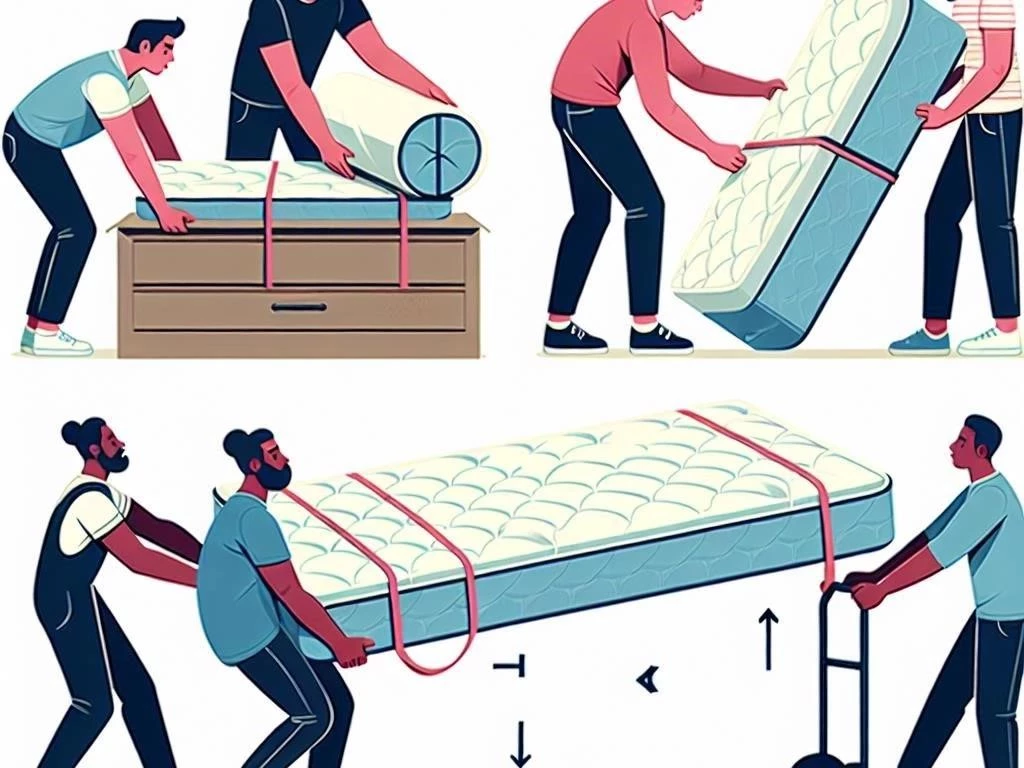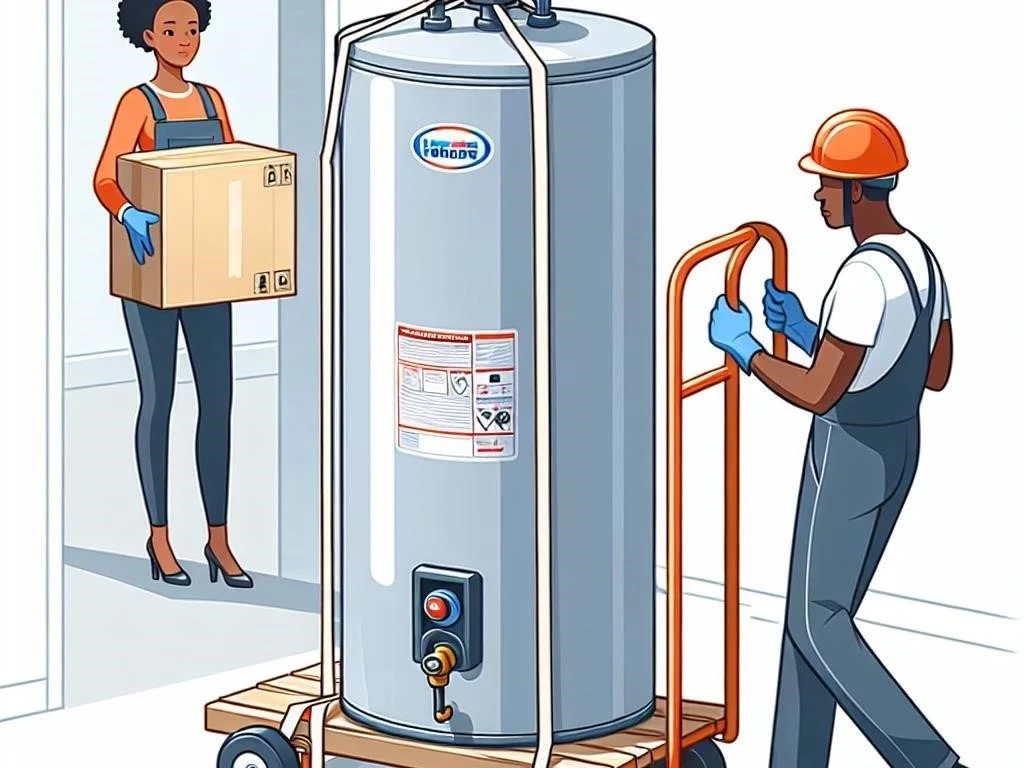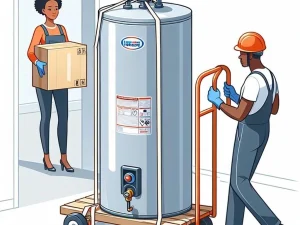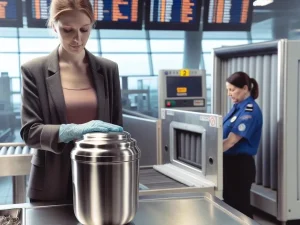How to Transport a Mattress
Transporting a mattress requires proper planning, packing, and handling techniques to ensure safe delivery and protection against damage during the moving process․
Understanding Mattress Sizes
Before transporting a mattress, understanding its size is crucial․ Standard mattress sizes include twin, full, queen, and king․ Each size affects the logistics of mattress moving, including vehicle choice and packing methods․ Knowing the dimensions helps ensure that your vehicle for mattress transport can accommodate the mattress comfortably․ Additionally, different sizes may require specific mattress packing techniques to secure them properly․ Measure your mattress before relocation to avoid any surprises during transport․ Accurate knowledge of mattress size also aids in planning for mattress storage space if needed during the transition or moving process․
Preparing for Mattress Moving
Preparing for mattress moving is essential for a smooth transport process․ Start by clearing a pathway from the bedroom to the vehicle, ensuring no obstacles hinder movement․ Next, gather necessary moving supplies, including a mattress cover, straps, and padding for protection․ Evaluate your options for transporting the mattress, whether it’s a moving truck or a suitable vehicle for mattress transport․ Additionally, consider enlisting help from friends or hiring moving assistance to safely lift and carry the mattress․ Lastly, check the weather conditions to avoid complications during your mattress delivery, ensuring a safe relocation experience․
2․1 Gather Moving Supplies
Gathering the right moving supplies is essential for successful mattress transport․ Start with a high-quality mattress cover that protects against dirt and moisture․ Next, procure sturdy moving straps or ropes to secure the mattress during transport, preventing movement․ You may also need packing blankets or bubble wrap to add extra cushioning for mattress protection․ Consider using a hand truck or dolly for easier lifting and maneuvering, particularly for larger mattress sizes․ Ensure you have scissors and tape on hand for securing any wrapping․ Having these supplies ready will streamline the mattress moving process significantly․
2․2 Choose the Right Vehicle for Mattress Transport
Selecting the appropriate vehicle for mattress transport is crucial for a successful move․ Depending on the mattress size, you may need a moving truck, van, or a pickup truck․ Ensure the vehicle has sufficient space to accommodate the mattress without bending or folding it, which may cause damage․ For larger mattresses, consider using a flatbed transport option, allowing for secure placement․ Additionally, check for available tie-down points to secure the mattress during transit․ A well-chosen vehicle will facilitate easy lifting and minimize the risk of damage during your mattress delivery and relocation process․
Packing Your Mattress for Safe Transport
Packing your mattress properly is vital for ensuring safe transport․ Start by cleaning the mattress thoroughly to remove dust and allergens․ Then, use a protective mattress cover to shield it from dirt and moisture during the move․ If you have additional padding, consider wrapping it separately for added mattress protection․ Secure the mattress with moving straps or ropes to prevent shifting while in transit․ For extra cushioning, use blankets or bubble wrap around the edges․ Properly packing your mattress will help prevent damage and ensure it arrives at your destination in excellent condition․
3․1 Using a Mattress Cover
Using a mattress cover is essential for protecting your mattress during transport․ A high-quality mattress cover prevents dirt, moisture, and allergens from damaging the surface․ Choose a cover that fits snugly over your mattress size, ensuring complete coverage․ Look for options with waterproof and durable materials that can withstand potential wear and tear․ When placing the mattress in the cover, ensure it’s completely sealed to avoid exposure during the move․ This added layer of protection will help maintain your mattress’s integrity, making it easier to transport and store without worrying about damage or contamination․
3․2 Wrapping Your Mattress
Wrapping your mattress is a crucial step for ensuring safe transport․ Begin by laying the mattress flat on a clean surface․ Use plastic wrap or moving blankets to cover the entire surface, ensuring complete coverage․ This provides an additional layer of mattress protection against dirt and moisture․ Secure the wrap with packing tape or straps, making sure it holds tightly without being overly constrictive․ Pay special attention to the corners, as they are more vulnerable to damage․ Properly wrapping your mattress helps maintain its condition and ensures it arrives at your destination in excellent shape․
Lifting and Carrying a Mattress
Lifting and carrying a mattress requires careful technique to avoid injury and damage․ Begin by assessing the weight and dimensions of the mattress to determine how many people are needed for the task․ When lifting, bend at your knees, not your back, to maintain proper posture․ Grasp the mattress firmly with both hands, preferably at the edges, to ensure a secure hold․ Communicate clearly with your lifting partner to coordinate movements and avoid sudden shifts․ Carry the mattress upright if possible, as this reduces the risk of damage during transport, ensuring a smooth relocation process․
4․1 Safe Techniques for Lifting a Mattress
Employing safe techniques for lifting a mattress is critical to prevent injury․ First, gather adequate assistance, as mattresses can be bulky and heavy․ When you’re ready to lift, stand close to the mattress and squat down, keeping your back straight․ Grip the edges firmly, ensuring a secure hold․ Engage your core muscles and lift with your legs rather than your back, providing better support․ Maintain a stable posture while raising the mattress, and keep it close to your body for added balance․ If navigating stairs, communicate clearly with your partner to coordinate movements effectively․
4․2 Tips for Carrying a Mattress Alone
Carrying a mattress alone can be challenging but manageable with the right approach․ Begin by assessing the mattress size and weight to determine if it’s feasible to lift alone․ Use a hand truck or dolly to assist with moving, as this reduces strain on your back․ If carrying without assistance, slide the mattress upright against your body, using your legs to lift it․ Make sure to take small, deliberate steps to maintain balance and control․ Utilize door frames or walls for support when navigating tight spaces, ensuring a safer and more efficient transport process․
Mattress Delivery Considerations
When planning mattress delivery, several important considerations must be taken into account․ First, confirm the delivery destination and ensure that access points, such as doors and hallways, can accommodate the mattress size․ It’s essential to schedule delivery during a time when you can be present to oversee the process․ If you’re using professional moving assistance, communicate specific requirements and any obstacles․ Additionally, consider the weather conditions on the delivery day, as rain or snow can impact safe transport․ Finally, verify that the mattress remains secure during transit to prevent damage or contamination․
5․1 Hiring Moving Assistance
Hiring moving assistance can significantly ease the mattress transport process․ Professionals are trained in safe mattress handling techniques, ensuring your mattress arrives undamaged․ Start by researching local moving companies and reading reviews to find reliable services․ Obtain quotes from multiple providers to compare pricing․ Discuss your specific needs, including mattress size and any challenges at your location․ Ensure the movers are insured, providing peace of mind against potential damages during transport․ On the delivery day, communicate clearly with the team about any obstacles, ensuring a smooth and efficient process for your mattress relocation․
5․2 Disassembling the Bed for Easier Transport
Disassembling the bed frame can greatly simplify mattress transport․ Begin by removing any bedding, including sheets and mattress protectors, to lighten the load․ Next, take apart the bed frame by unscrewing bolts or detaching components, ensuring you keep all hardware in a labeled bag for easy reassembly․ If your bed includes a headboard or footboard, remove these as well․ This approach not only allows for easier maneuvering through doorways and staircases but also prevents potential damage to both the mattress and bed frame․ Ensure you have the right tools ready for efficient disassembly․
Mattress Storage Tips
Proper mattress storage is crucial for maintaining its quality during transport․ First, clean the mattress thoroughly to remove dust and allergens, then allow it to air out․ Use a protective mattress cover to shield it from moisture and dirt while stored․ Always store the mattress flat, avoiding any bending or folding, which can lead to permanent damage․ If space allows, elevate the mattress off the ground using pallets or shelves to promote airflow․ Additionally, avoid placing heavy items on top of the mattress during storage to prevent indentations and maintain its shape for future use․
Relocation Tips for Mattress Handling
When relocating a mattress, it’s essential to follow specific tips for safe handling․ First, measure doorways and staircases to ensure the mattress fits without difficulty․ Consider using a mattress bag for added protection against dirt and moisture during transport․ If possible, transport the mattress upright to minimize damage․ Always lift the mattress using proper techniques, keeping your back straight and using your legs for support․ If navigating tight spaces, tilt the mattress slightly to maneuver effectively․ Finally, communicate clearly with any helpers to coordinate movements, ensuring a smoother and safer relocation experience․
Transporting Beds on a Flatbed
Transporting beds on a flatbed requires careful planning to ensure safety and security․ First, ensure the flatbed is clean and free from debris to prevent damage during transport․ Use a mattress cover for protection against dirt and moisture, and wrap the mattress securely with blankets․ Position the mattress flat on the flatbed, avoiding any folding․ Use straps to secure the mattress tightly to prevent shifting during transit․ Additionally, consider adding padding around the edges to avoid impact damage․ Finally, drive cautiously, especially over bumps and turns, to ensure safe transport of your mattress․
Securing Your Mattress During Transport
Securing your mattress during transport is vital to prevent damage and ensure safe arrival․ Start by using sturdy straps or ropes to secure the mattress to the vehicle, avoiding any movement during transit․ If using a moving truck, place the mattress against a wall or in a designated area to minimize shifting․ Consider adding padding, such as blankets, to absorb shocks and protect the edges․ Ensure the mattress is covered with a waterproof mattress cover to guard against moisture․ Finally, regularly check during transport to ensure everything remains secure and intact throughout the journey․














Post Comment